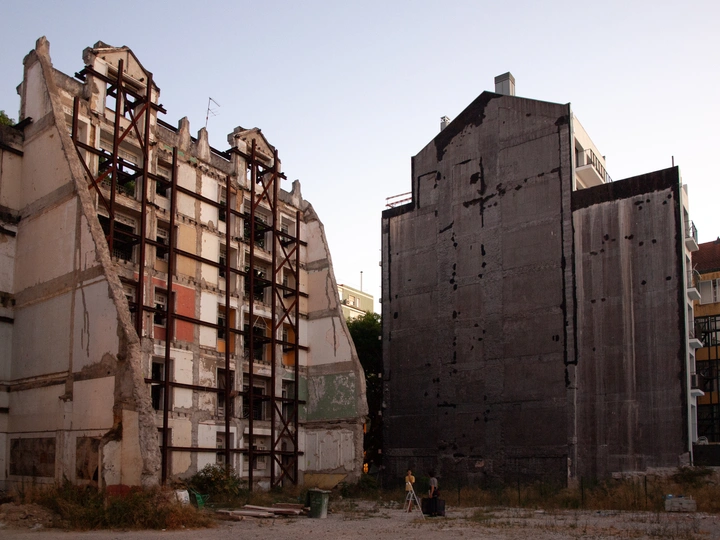Experimental Facades

I'm Manuel Cabugueira (2002, PT). I’m currently completing my Master’s thesis at the Lisbon School of Architecture. I maintain a multidisciplinary practice that aims to simplify complex thoughts and ideas through a continuous process of learning from life and experiences.
My work moves across scales, balancing practical, performative, and theoretical approaches with a strong intention to connect spatial thinking to our social and cultural contexts.
Along my journey, I’ve worked as an intern at the MAAT (Museum of Art, Architecture and Technology) and the Calouste Gulbenkian Foundation’s Modern Art Centre as an exhibition assistant. I’ve also collaborated with Jazz.pt magazine and with the Lisbon Architecture Trienale’s Educational Services.
Within the university, I co-founded a student collective, Folha em Branco, to help build a more open and collaborative environment, active in activism, social and spatial practices, and the organization of lectures, workshops, and idea-sharing spaces.
Our urban context reflects our social reality. The static presence of architecture shapes a city that imposes itself and over-determines society. Yet, temporary, experimental, and public situations can act as triggers, stimulating a social and cultural response from the city.
I’d say the first step is simply going for a walk. The architect’s presence in the city everydayness can already be a triggering act. There’s always something that catches our attention, either frustrating due to its unused potential or engaging through its informal occupation. The act of selecting an object suggests care by being preserved, questioned, and activated.
Each object is considered within its specific condition, its current and ideal domain, its static or dynamic state, its value as void or heritage, and its presence and impact on the community. The architect’s position is defined in relation to the object’s potential as public space. The object resonates through its network, and this systematic reading allows us to think in terms of a flexible strategy. The aim is not isolated solutions, but scalable proposals, adaptable to urban, cultural, and social contexts.
Every situation is temporary. The project proposes to play with time. There is an inevitable future to which cities must respond. Interventions evolve from the specificities of each object. Opening a door can be the first triggering act. From there, interventions question what is minimally needed to activate something, growing into more consultative structures, considering impact, convenience, and bureaucracy.
Temporariness becomes a tool, allowing users to experiment and navigate ambiguity. Walking through Lisbon, I was struck by facades in retention, this vertical archaeology suspended by interest and speculation. Retaining structures hide interstitial potential with patrimonial resonance. This proposal challenges the facade to act as mediator, framing architecture as a practice of resistance in the public domain.